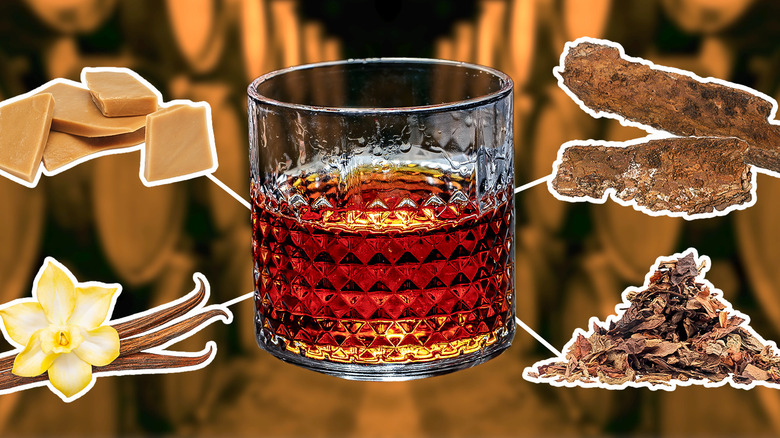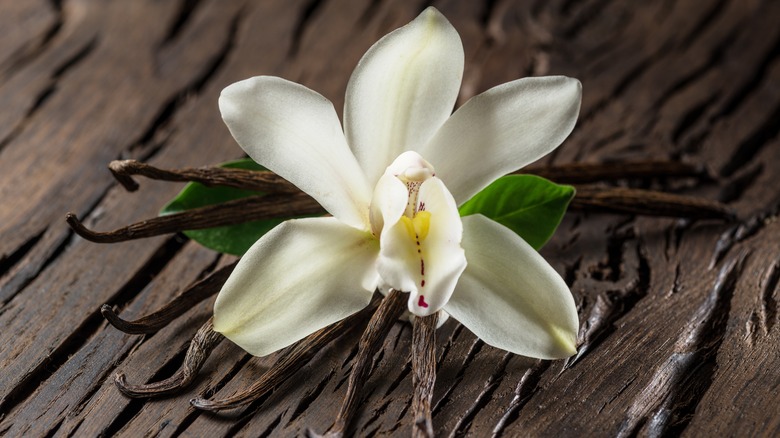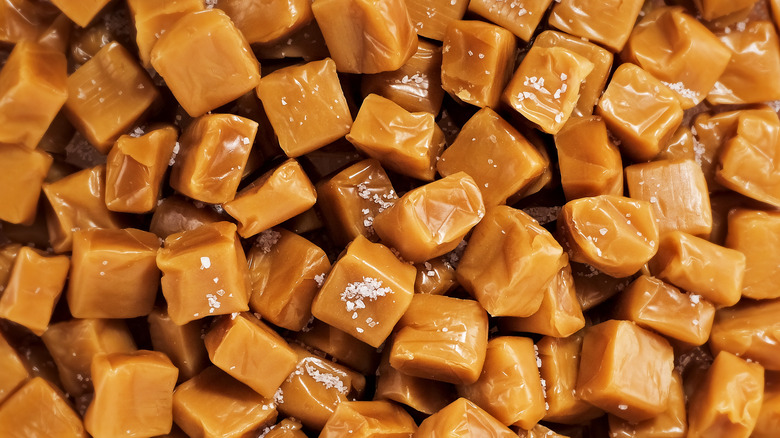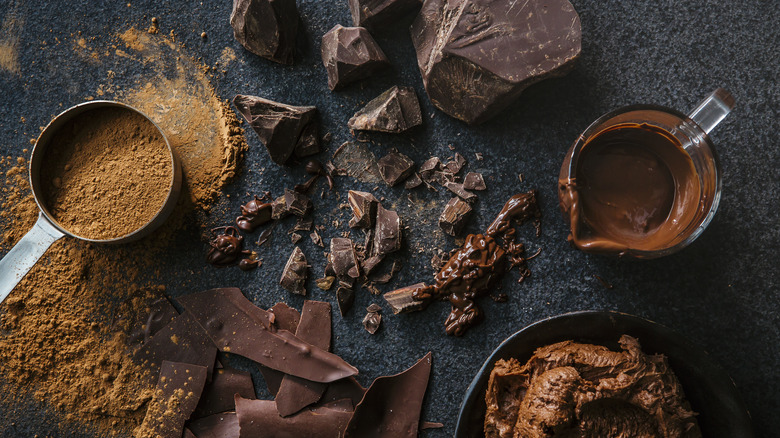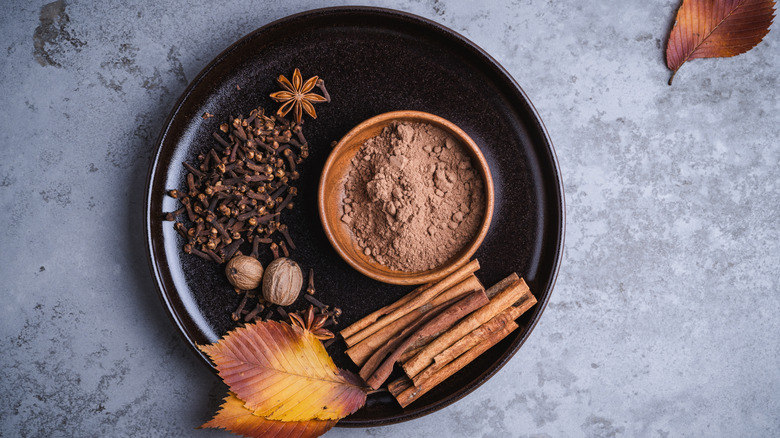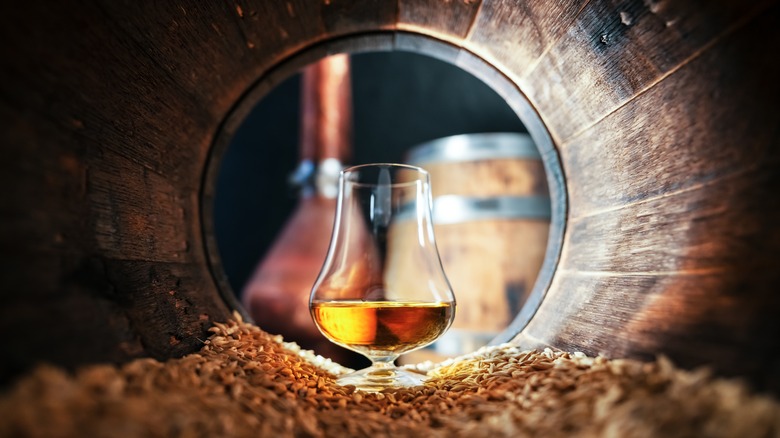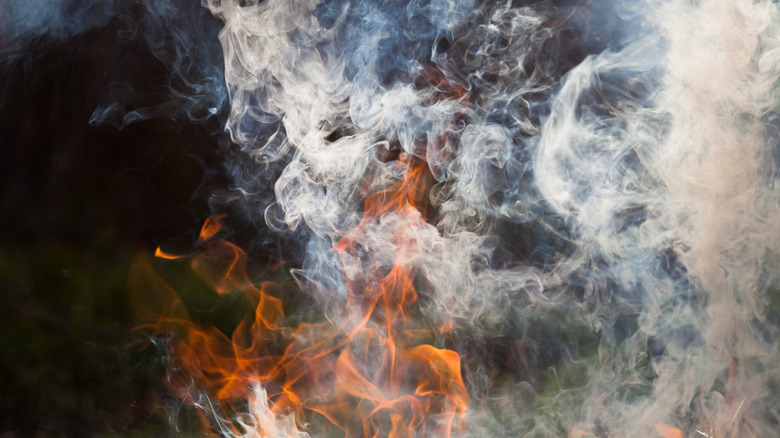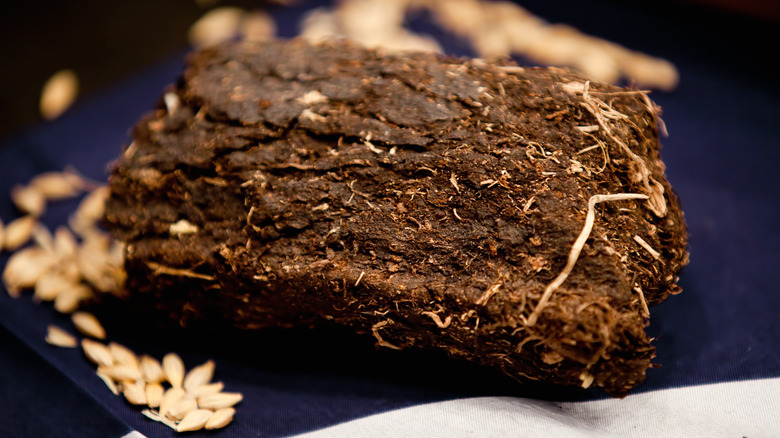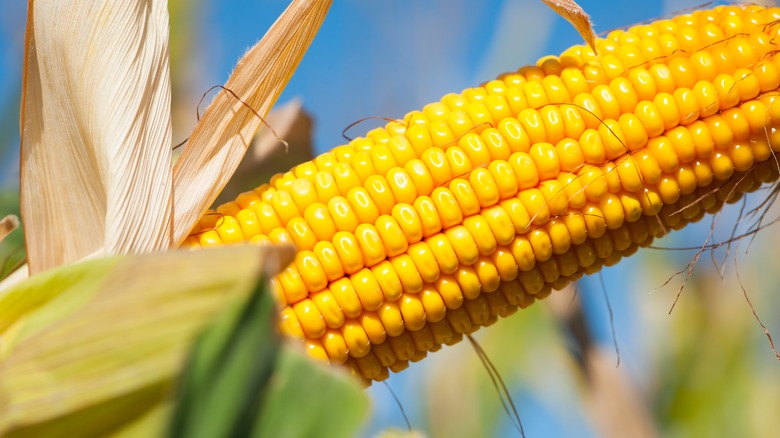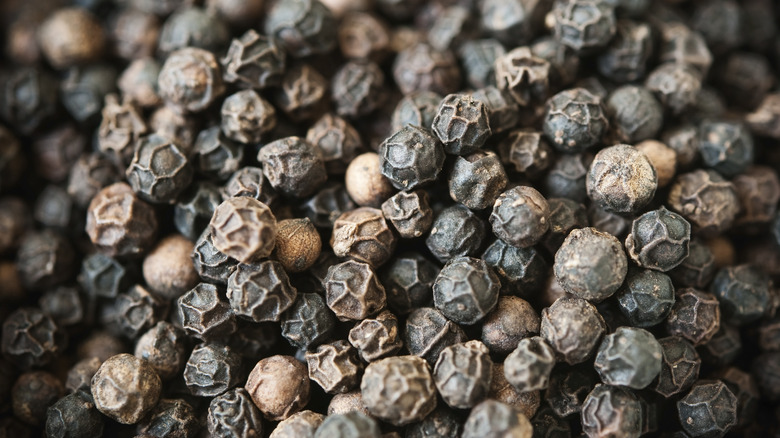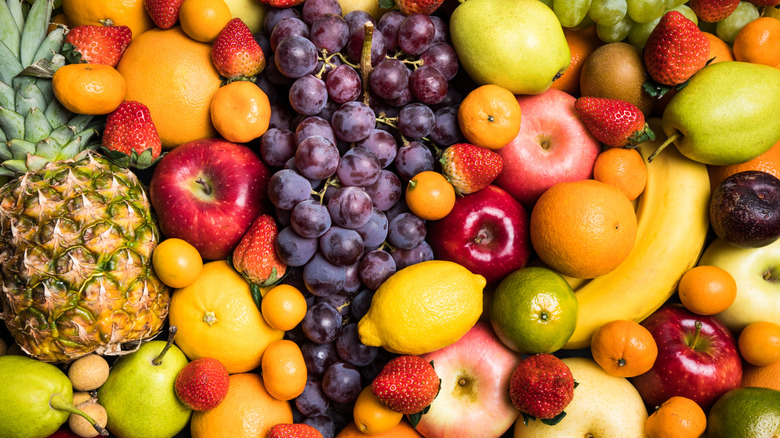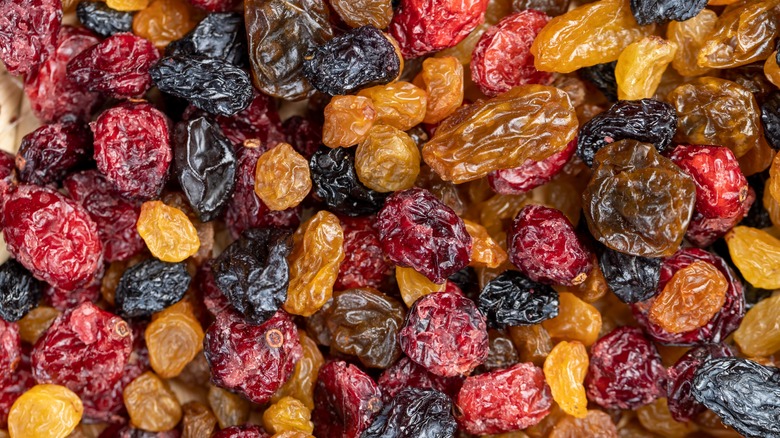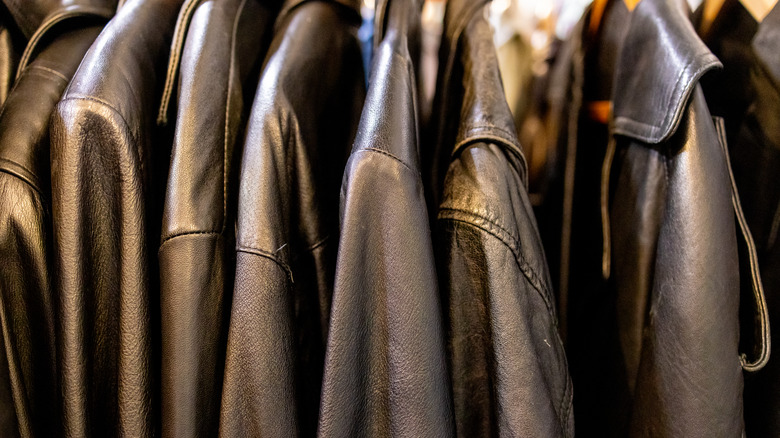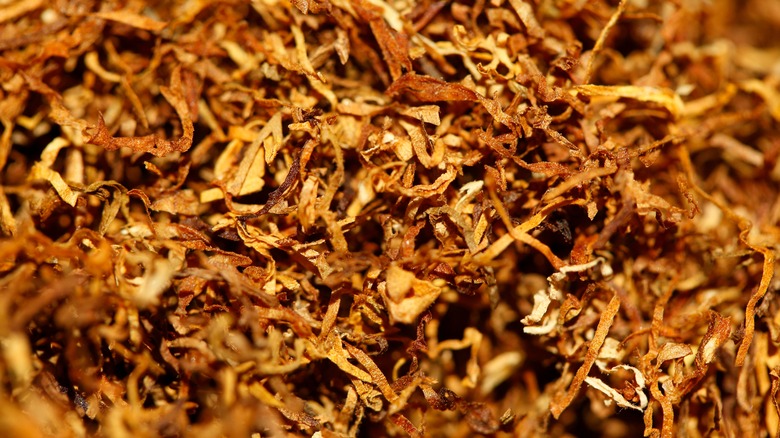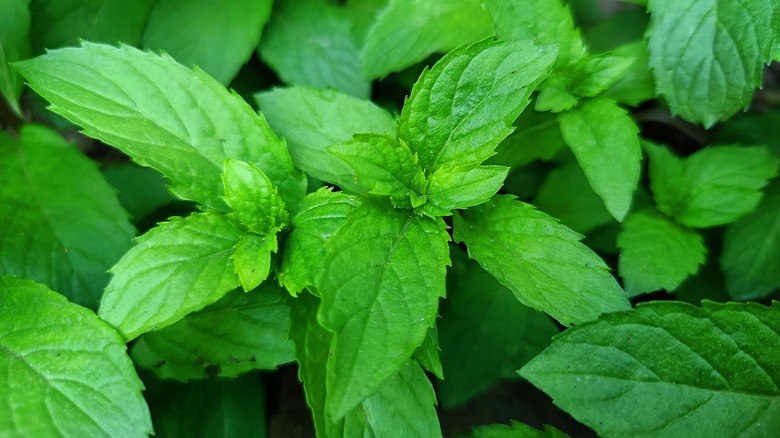How To Identify 15 Popular Flavor Notes In Whiskey
I consider myself pretty knowledgeable when it comes to whiskey, thanks to a combination of personal interest, a long career in the bar industry, and being fortunate enough to attend various masterclasses and visit many distilleries. However, I will admit that it took a while to gain the confidence to comment on specific tasting notes. Listening to connoisseurs and reading reviews can be daunting, given how many different descriptors are thrown around. Plus, when you're starting out, it's not always easy to detect flavors that you've been assured are present.
The first step towards being able to identify specific flavor notes in whiskey is to learn which are common and relatively objective, and which are subjective to the reviewer. Below, I'm going to cover those which fall into the former category. These are flavors that aren't just universally agreed upon but can be traced back to a specific source. Whiskey is made from grains, but the type of grain used will have a specific effect on the taste. Some flavors come from the type of barrel the spirit is aged in, how long it's been aged, or even the climate where the aging takes place. Fermentation and different yeast strains can also have an impact. By knowing where the flavors come from, you'll find it much easier to know what to look for based on a specific style of whiskey.
Vanilla
Vanilla is a very common flavor you'll come across in whiskey, and it's one of the easier ones to identify. You'll find it most noticeable in the aroma where it will remind you of rich vanilla ice cream, but you may be able to detect the creamy taste on your palate too.
Interestingly, although some vanilla flavor can come from the fermentation process, the majority comes from the barrel in which the whiskey is aged thanks to a compound inside the wood called vanillin. You'll typically find the strongest vanilla notes in American whiskeys, like Buffalo Trace bourbon. This is partly due to the fact most bourbon is aged in American white oak which contains a high amount of vanillin. Bourbon barrels are also charred on the inside before the whiskey goes in, which helps trigger some of the chemical processes that produce the vanilla flavor. You can also find vanilla notes in scotch whiskies that have been aged in ex-bourbon barrels, such as Glenmorangie.
Caramel
Another flavor that's frequently mentioned during whiskey tastings is caramel. Sweet and smooth, you should be able to detect its candy-like presence in both the aroma and all over your palate. It can also present itself as a darker, richer variant, like toffee, fudge, or even molasses.
Like vanilla, caramel is another flavor that can be attributed to the whiskey barrel. Wood contains natural sugars, and when the inside of an oak barrel is charred, the heat caramelizes these sugars and the compounds are picked up by the whiskey. Caramel flavors are usually associated with bourbon and rye whiskey because both of these styles must be aged in charred barrels by law. However, like with vanilla, scotch whiskies aged in old bourbon casks, like Auchentoshan Single Malt, will gain some of this character, too. Using well-roasted barley in the recipe can also produce toffee notes, so you're likely to encounter them in scotch whiskies.
Cocoa
You'll often hear people talk about cocoa notes in whiskey, but this one can be a little bit trickier to notice. You won't normally detect it until the finish, where it comes across as slightly rich and fairly bitter — not sweet like a candy bar. This means you'll have to look past the initial taste of the whiskey and focus on the flavors that linger on your tongue. If a whiskey is said to have a long finish, it'll be much easier to pick out this specific taste.
These dark, roasty chocolate notes are normally a result of extended aging in heavily charred barrels, which is why you'll find them in whiskeys like Eagle Rare 10-Year or Old Forester 1910. However, cocoa notes can also result from using roasted grains, much in the way dark beers can taste chocolatey. So, while a regular bottle of Jameson Irish Whiskey doesn't have much cocoa character, the Caskmates expression that's aged in ex-stout beer casks has it in abundance.
Spice
When a whiskey is said to have notes of spice, this is rarely, if ever, referring to peppery heat. Rather, it's used as a catch-all term for baking spice flavors, and these can vary from dram to dram. Cinnamon, clove, and nutmeg are all fairly commonplace. You should be able to pick these up in the aroma, but they'll also have a slightly warming presence on your palate.
Baking spice notes are usually most noticeable in whiskeys that use a lot of rye grain, like Rittenhouse Rye. However, you can also get spice from using new, charred oak. This is why Maker's Mark 46 bourbon has such a prickly cinnamon profile — because seasoned oak staves are added to the barrel during aging. Once again, aging whiskey in used barrels can also help transfer some of these characteristics. Springbank 10 scotch is one that comes to mind, which likely gets its spiciness from the ex-bourbon and sherry casks it's aged in.
Oak
Oak is one of the simpler flavor notes to identify in whiskey. Unlike resinous pine, it has a rich, intensely woody quality to it, like pencil shavings or fresh sawdust. You might be able to pick up oak on the nose of the whiskey, but it tends to be strongest during the finish, where it can have a slightly tannic, drying effect in your mouth.
Unsurprisingly, oakiness comes from the whiskey barrel and it's a flavor that greatly intensifies over time. Elijah Craig Barrel Proof is a great example of an oaky whiskey, which isn't really surprising. The bourbon is literally named after the man who many claim invented bourbon through his method of barrel-aging. Others believe the charred barrel technique was a result of whiskey makers purging the smell from old fish barrels, but that's beside the point. Auchentoshan Three Wood is another great example of an oaky whisky, with a deep complexity that comes from being matured in three different types of oak casks.
Smoke
Smoky whiskeys are a bit of a love-it-or-hate-it affair — personally, I can think of nothing better. It's almost impossible to miss smoke in whiskey, as the woody campfire aroma hits you immediately, and it usually lingers on the palate throughout the finish.
It's important to note that smokiness is often conflated with peatiness, and while the two usually go hand-in-hand, they are technically distinct. Scotch whisky tends to gain its smoky character thanks to distillers malting their barley with burning peat, which I'll cover in more detail shortly. Whiskeys that are smoky but not peaty get their character from spending a long time in well-charred or toasted barrels. Jim Beam Black is a good entry-level bourbon that falls into this latter category, with a smoked oak character that's not too complex or overpowering. Glendronach 12-Year-Old is another great option if you want a smoky scotch but aren't a fan of heavily peated whiskies.
Peat
One thing that turns a lot of people off smoky whiskey isn't that they don't like smoke, rather, they're not a fan of peat. As I mentioned, it is possible to find smoky whiskey that isn't peaty, but you can't have peat without smoke.
Peat — sometimes called peat moss — is a type of organic material found in bogs, something Scotland has in abundance. Some distilleries use smoking peat to malt the barley for their whisky, giving it an incredibly unique profile. Beneath the smoke itself, you should be able to detect an extremely earthy character that smells a bit like damp soil. Again, peatiness is hard to miss, as it follows the smoke all through the palate and into the finish. The peatiest scotches normally hail from the Islay region of Scotland, with bottles like Laphroaig 10 Year, Lagavulin 16, and Ardbeg 10 dramatically showcasing the style. However, some Highland whiskies, such as Oban 14, manage to showcase peat without as much heavy smoke, so it is possible to find some middle ground.
Corn
When someone says that whiskey tastes like corn, the flavor is normally similar to sweetcorn or cornbread, and it comes directly from the corn used to make the whiskey. You're most likely to find corn notes in bourbon because the style legally has to contain at least 51% corn in its mash bill.
What does mash bill mean? In the whiskey world, mash bill is the term we give to the amount and type of grains in the recipe. You should be able to pick out the sweet, grainy corn flavor in the aroma and when you taste the whiskey, but it won't be present in every bourbon. This is because distillers can make up the remaining 49% of the mash bill with different grains. Corn will be much more noticeable in high-corn bourbons compared to high-rye bourbons, which is why something like Michter's Small Batch will have more corn notes than Four Roses, for example. Then, you have corn whiskeys, like Mellow Corn or Mexico's Sierra Norte. These use over 80% corn to produce smooth, fuss-free whiskeys, sometimes combining different varieties for more nuanced characteristics.
Pepper
Occasionally, you'll be able to detect a gently warming spice in whiskey that tastes like freshly cracked black pepper, prickling your tongue and throat. It's not an overpowering sensation, rather it's one that amplifies the mouthfeel in a more pleasant manner than alcohol heat might.
Like with baking spice notes, it's rye grain that's usually responsible for making whiskey taste peppery. You'll find the pepper flavor is a regular feature of straight rye whiskeys, like Bulleit Rye, as well as high-rye bourbons. Sometimes, the sensation comes from the wood and alcohol interacting with one another in the barrel. Wild Turkey 101 is a great example of this — in addition to having a high rye content, the barrels also undergo what's called "alligator charring." The highest level of charring, the name of this charring comes from the fact the wood is toasted to the point that it looks like alligator skin. Because the inside surface of the barrel splits during this process, it allows the whiskey to come into contact with more wood, picking up even more flavor.
Fresh fruit
While saying a whiskey tastes fruity isn't necessarily wrong, it's a bit of a vague term. Citrus, stone fruit, dark fruit, berries, orchard fruit, and tropical fruit are all flavors that can make an appearance. They can make a whiskey taste tangy, sweet and juicy, or crisp and bright. There may even be a combination of different types of fruit that you're able to pick out in the aroma or when you take a sip.
Generally speaking, fruit flavors can develop for one of two reasons. Orchard fruit, light berries, and fresh citrus flavors normally arise in the fermentation process and can vary depending on the type of yeast being used. Benromach scotch, with its crisp apple notes, is a good example of this. Other fruit flavors are usually a result of aging in casks that have held another spirit. The Chita Single Grain from Suntory is a great representation, picking up tropical fruit flavors from a combination of American and Spanish oak casks, and time spent in ex-wine casks.
Dried fruit
With whiskey tasting, dried fruit is more distinct than fresh fruit, and refers to rich, sweet flavors like raisins, dates, figs, cherries, or even prunes. While they're definitely detectable on the nose and palate, they can also give the whiskey a slightly jammy mouthfeel.
Rather than being a result of fermentation, dried fruit flavors are almost always imparted by a barrel that was previously used to condition wine. These may have held regular wine but more often than not, the barrels have been used to age fortified wine, such as sherry or port. The Balvenie 18 Pedro Ximinez is a superb example, picking up sweet vanilla flavors from ex-bourbon barrels, with a sherry cask finish offering notes of rich fig. The Macallan Sherry Oak 18-Year-Old is another premium dram that absorbs the essences of dates, raisins, and even dark ginger from spending so much time in sherry-seasoned casks. Ex-wine casks can also infuse a whiskey with hints of citrus peel, a characteristic that's richer and less sharp than fresh citrus notes.
Leather
As whiskey flavors go, leather can be one of the trickier ones to identify at first. It has a rich, earthy profile but with a pleasant mustiness, like a well-worn leather jacket or very old books. You can sometimes pick up leather on the nose, but you're more likely to notice it in whiskeys with a long finish.
Like dark fruit flavors, leather tends to be a byproduct of finishing the whiskey in ex-sherry casks, and it's amplified by extended aging. Glendronach 15 is one of my favorite scotches in this category, boasting notes of sticky dates and prunes with a damp, leathery finish. However, the climate in which the whiskey is aged can also contribute to a leathery finish. Look at Kentucky, the home of bourbon. The cycle of hot, humid summers and frigid winters leads to dramatic temperature fluctuations that cause the wood of bourbon barrels to expand and contract. This increases the interaction between the whiskey and the oak, allowing deeper, more nuanced flavors to enter the liquid. Leathery bourbons like Russell's Reserve 10 are a great representation of what can be achieved when the whiskey undergoes extended aging in this environment.
Tobacco
Although tobacco and leather are distinct flavors, when you detect one in the finish, you'll usually be able to pick out the other. It's worth pointing out that in whiskey terminology, tobacco doesn't refer to a lit cigar or cigarette. Rather, it's the essence of dried tobacco leaves — earthy, sweet, woody, and just a little smoky.
Tobacco notes come from the barrel, although they can take a long time to develop enough to pick out in the whiskey itself. Scotches aged for 15 years or more will normally have developed tobacco flavors which become more prominent with longer maturation. Bourbon is rarely aged as long as scotch, but this is due to the climate fluctuations I mentioned above spurring the process. For example, Blanton's Single Barrel Bourbon is a stunning whiskey that's likely not been aged for longer than eight years, but it still has heaps of tobacco character. Woodford Reserve Double Oak is a more entry-level bourbon without an age statement, but it also picks up tobacco notes from spending its final year in a second, heavily charred barrel.
Floral
Like with fruity notes, saying a whiskey is floral can refer to a wide range of aromatic flavors, including things like lavender, pine, and heather. Floral aspects can be quite tricky to pick out because they're usually pretty light and hide behind more boisterous flavors. The best place to seek them out is in the whiskey's aroma, but make sure you open your mouth when you take a whiff. This increases the amount of air you take in and helps reduce the heat of the alcohol on the nose, allowing you to identify the subtle flavors.
Floral qualities usually arise from using barley, but their intensity and the type of flavor can depend on the distillation process. You'll occasionally get them from aging whiskey in ex-muscat wine casks, too. Japan's whisky is extremely well-regarded, and it has a reputation for producing expressions with a floral element. Hibiki Harmony is a famous example of this, with its elegant aroma of orange blossom. That's not to say Japanese whiskies are unique — even the ubiquitous Wild Turkey bourbon has touches of honeysuckle there for those who seek it out.
Herbal
While herbaceous whiskey might sound a bit odd, we're not talking about anything as pungent as absinthe or Chartreuse. Instead, herbal notes refer to flavors like mint and spearmint, eucalyptus, or even freshly cut grass. Although they can be quite nuanced, you should be able to find them lurking in the aroma, and occasionally on the palate.
Herbal flavors can come from a few different sources. Mint and eucalyptus notes come from using rye, so you'll find them in whiskeys like James E. Pepper. Both rye and barley grains can produce a grassy flavor. Scotch whisky and Irish whiskey use plenty of barley, which is why many of them have a grassy quality. Then you have drams like The Nikka Yoichi 10-Year-Old from Japan, which has a delightfully complex herbaceousness that's hard to pin down. Some of the earthier elements come from the fact it's a peated whisky, but it's likely that the fermentation and distillation processes also contribute to the overall taste profile.
